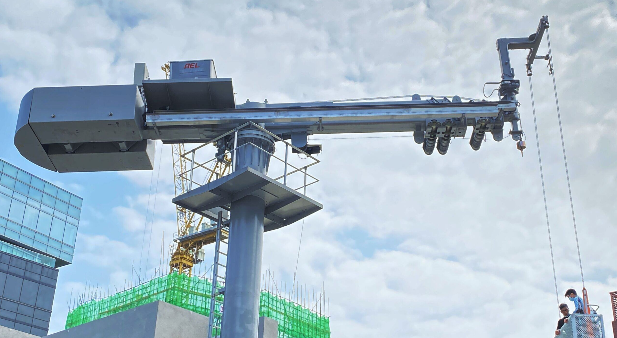Home WiFi has become the invisible lifeline of modern households. From video streaming and remote work to smart home automation and telehealth services, a reliable connection is no longer a luxury—it’s a necessity. With every device in your home—from your phone and laptop to your fridge and doorbell—requiring internet access, the importance of a high-performing home WiFi network cannot be overstated.
This guide explores how home WiFi empowers modern living, how fibre broadband supports this ecosystem, and what you need to consider when setting up or upgrading your home internet.
What Is Home WiFi and Why It Matters Today
Home WiFi refers to the wireless local area network (WLAN) that connects your internet-enabled devices to the internet within your residence. It uses a router to broadcast a signal throughout your home, enabling seamless communication between devices and the broader web.
In today’s digital world, home WiFi is the central nervous system of every household. It fuels everything from entertainment and education to productivity and security. A strong, consistent connection ensures that your lifestyle runs uninterrupted, especially as digital needs continue to grow.
Key Uses of Home WiFi in Everyday Life
Streaming and Entertainment: Streaming has become the go-to source for music, movies, and shows. Platforms like Netflix, Disney+, YouTube, and Spotify demand fast, high-bandwidth internet. Home WiFi allows multiple users to stream content simultaneously without lag, making buffer-free entertainment a reality.
Remote Work and Online Learning: Work-from-home setups rely heavily on home WiFi. Video conferencing, file sharing, and cloud-based productivity tools like Zoom, Microsoft Teams, and Google Workspace all depend on a stable internet connection. Students, too, benefit from uninterrupted e-learning, virtual classrooms, and digital study resources.
Staying Connected with Loved Ones: WiFi powers video calls, voice chats, and messaging apps like WhatsApp, FaceTime, and Telegram. Whether it’s a call to a friend across town or a video catch-up with family overseas, home WiFi keeps everyone connected regardless of distance.
The Role of Home WiFi in a Smart Home
Home Automation: The rise of smart devices—such as smart air-conditioners, refrigerators, light bulbs, washing machines, and coffee makers—has made home automation a reality. These devices depend on home WiFi to receive commands, automate routines, and integrate with platforms like Amazon Alexa or Google Home.
Smart Security Systems: Modern homes increasingly rely on smart security solutions. WiFi-enabled CCTVs, motion detectors, smoke alarms, and smart locks allow homeowners to monitor and control security from anywhere. Real-time alerts and video feeds give peace of mind, whether you’re at work or on vacation.
Energy Efficiency: Home energy management systems leverage WiFi and IoT to analyze power consumption and optimize energy usage. These tools provide real-time data on appliance performance, helping households reduce energy bills and lower their carbon footprint.
Telehealth and Elderly Care: Telehealth has revolutionized healthcare by making consultations accessible from home. Especially for the elderly, home WiFi enables remote health monitoring, virtual checkups, and emergency alert systems—empowering them to live independently while remaining connected to healthcare providers.
Fibre Broadband: The Backbone of Reliable Home WiFi
The strength of home WiFi starts with the internet connection that powers it. Fibre broadband is currently the gold standard, offering ultra-fast speeds and superior reliability compared to traditional cable or DSL.
Unlike copper-based connections, fibre optic cables transmit data via light signals, resulting in lower latency and higher bandwidth capacity. This is essential for households where multiple smart devices and users are online at the same time.
A robust fibre broadband connection eliminates the frustrations of slow downloads, video buffering, and dropped video calls. Whether you’re gaming, streaming 4K content, or conducting business calls from home, fibre-backed home WiFi ensures top-tier performance.
How to Get Fibre Broadband for Your Home in Singapore
In Singapore, NetLink Trust is the company that designs, builds, owns, and operates the passive fibre network infrastructure behind the Next Generation Nationwide Broadband Network (Next Gen NBN). They provide wholesale access to telecommunication companies, which then offer broadband plans to consumers.
This model allows telcos to focus on competitive service offerings without the burden of infrastructure investment. As a consumer, you simply choose a fibre broadband plan from a provider, and installation is arranged to connect your home to the NetLink Trust network.
Key steps to get started:
- Choose a broadband provider and plan that matches your speed and usage needs.
- Schedule an installation—most homes in Singapore are fibre-ready.
- Set up your WiFi router, ensuring optimal placement for full-home coverage.
Choosing the Right Home WiFi Setup
To make the most of your home WiFi, choosing the right setup is crucial. Here are the key considerations:
Internet Speed Requirements: Assess the number of devices and type of usage in your home. A family of four using WiFi for work, study, streaming, and gaming will need higher speeds—often 1Gbps or more.
Router Type and Placement: Invest in a modern, dual-band or tri-band router that supports WiFi 5 or WiFi 6. Place it in a central location, away from walls and obstructions, to ensure even signal distribution.
Mesh Networks and WiFi Extenders: For larger homes or those with signal dead zones, a mesh WiFi system offers seamless coverage. Unlike extenders, mesh networks broadcast a unified signal for uninterrupted connectivity across rooms.
Common Home WiFi Problems and How to Fix Them
Even with high-speed fibre broadband, home WiFi can sometimes underperform. Here are common issues and how to resolve them:
- Slow Speeds: Check for bandwidth-heavy applications or background downloads. Reboot your router or upgrade to a higher-speed plan if needed.
- Dead Zones: Use a mesh system or strategically placed extenders to cover weak signal areas.
- Connectivity Drops: Ensure firmware is updated. Interference from nearby networks can also be reduced by switching WiFi channels.
- Too Many Devices: Older routers can become overwhelmed. Upgrade to a router with MU-MIMO (multi-user, multiple input, multiple output) technology to handle more connections.
Future Trends in Home WiFi and Connectivity
The future of home WiFi is evolving rapidly with emerging technologies:
WiFi 6 and WiFi 7: Next-gen standards like WiFi 6 and WiFi 7 offer faster speeds, better efficiency, and improved performance in crowded environments. This means smoother gaming, faster downloads, and better smart home functionality.
Smarter Homes with AI: Integration with artificial intelligence will allow home WiFi networks to self-optimize. AI can prioritize traffic, manage device access, and even detect threats—making networks more secure and intelligent.
Greater Bandwidth Demands: As augmented reality (AR), virtual reality (VR), and 8K video become mainstream, homes will require even more robust bandwidth. Fibre broadband and next-gen WiFi tech will be essential for keeping up.
Takeaway
A powerful home WiFi setup is the foundation for modern digital living. Whether you’re managing a smart home, working remotely, or enjoying high-quality streaming, a reliable connection is key. Investing in a fibre broadband connection ensures your network can handle today’s demands and tomorrow’s innovations.
With NetLink Trust providing a future-ready infrastructure and telecom providers offering flexible fibre plans, upgrading your home WiFi has never been easier. Make the smart move today—because every aspect of modern life depends on it.











